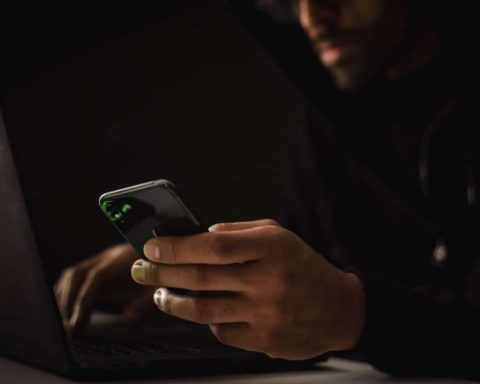Awareness of augmented reality (AR) is growing rapidly this year with the popularity of the game Pokémon Go, which many organisations have taken advantage of to attract customers. However, a new ISACA study on Global Business Technologies and Cybersecurity shows that European organisations are still reluctant to use it for commercial purposes. Only 19 % of the 1,651 European professionals surveyed are convinced that the benefits of PLAR outweigh its risks, with the majority remaining unsure.
« Ne expect these numbers to change in the near future as companies begin to see that AR is an attractive technology that is producing positive business results, including improved training, education, marketing and customer experience, said Rob Clyde, director of the board of directors of ISACA, the international association of more than 140,000 security, insurance, risk and IT governance professionals, and executive advisor to BullGuard Software.
At this time, safety issues are among the main barriers to the adoption of AR, as well as concerns about the return on this investment. The survey results also showed that :
- 63 % professionals surveyed worldwide do not have a policy regarding the use of RA applications in the workplace. This number rises to 70 % in Europe, with another group representing 15 % of European respondents not knowing whether such policies are in place.
- 18 % of European IT professionals have used AR outside of work.
- 87 % of European professionals believe that Internet users should be informed of the privacy risks associated with augmented reality, and 86 % believe that organisations should be concerned about the privacy risks associated with this technology.
Even organizations that don't actively use PLAR should monitor it, says Clyde. Virtual graffiti applications that use RA technology could degrade the facades of buildings, monuments and other surfaces with unauthorized negative images. While the majority of respondents believe their workplaces are vulnerable to "virtual graffiti" attacks, only 4 % of European organizations have a program in place to monitor them. Furthermore, only 20 % of the professionals surveyed believe that their organisation has the means to detect messages, images or videos posted publicly on social networks geobased on their company and likely to appear in augmented reality applications that gather this information.
The annual IT risk/benefit barometer ISACA surveys thousands of IT and cyber security professionals and consumers around the world to reveal attitudes and behaviors related to critical technologies and information, and the trade-offs that organizations and consumers need to consider in assessing both its benefits and potential threats. This year's market research, conducted in five countries - the United States, United Kingdom, Australia, India and Singapore - focused on both IoT-connected and RA-optimized devices.
More than three out of four consumers in every region surveyed are concerned that these optimizations could make their devices more vulnerable to a breach of privacy.
Although most respondents reported low confidence in their knowledge of AR technology, awareness of its potential benefits is growing. A significant percentage of European respondents believe that RA-enhanced technology would be beneficial in a number of sectors, such as entertainment (66 %), education (61 %), marketing and media (59 %).
63 % of British Internet users believe that PLAR-based workplace training would help them in their work, and 62 % believe that PLAR-enhanced training guides would be useful in their daily lives.
The high potential of AR is evident. A recent estimate by Goldman Sachs predicts that the hardware and software market for augmented reality and virtual reality will be worth over £65 billion by 2025*.
To help organizations overcome barriers to the adoption of PLAR and realize its business benefits, ISACA makes the following recommendations:
- Extend social network monitoring to PLAR platforms. Leverage social network policies and monitoring and extend them to augmented reality platforms.
- Consider in which areas AR improves business activity. Training, diagnostics and marketing are three areas with particularly high potential.
- Review the corporate governance framework and update its policies. Integrate the use of AR into the business as part of organizational policies and procedures, including BYOD (bring your own material) and privacy policies.
- Establish security at every step of the process. Security is a critical component of PLAR initiatives that helps build trust in the data.
"Companies must continue to work on their agility and the application of effective governance, security and risk management measures to fully exploit the benefits of these technological advances. Proactive monitoring of malicious activities such as virtual graffiti and data breaches is crucial to enable companies to leverage the value of new technologies while mitigating risk, said Christos Dimitriadis, Ph.D. CISA, CISM, CRISC, Chairman of the ISACA Board of Directors and Director of the Information Security Group at INTRALOT.
For the results of the global survey, as well as expert analysis and related graphs, see : www.isaca.org/risk-reward-barometer
* "Virtual & Augmented Reality: Understanding the Race for the Next Computing Platform", January 13, 2016, Goldman Sachs.
About ISACA's 2016 IT Risk/Benefit Barometer
The annual IT Risk/Benefit Barometer is an indicator of overall confidence in information. Conducted by ISACA, one, the barometer surveys thousands of businesses, consumers and IT professionals around the world to reveal attitudes and behaviours related to critical information and technology, and the trade-offs they must consider when assessing risks and benefits. The study is based on an online survey of 6,591 ISACA members in 140 countries conducted between 19 and 29 September 2016. Additional online surveys were conducted by M/A/R/C Research on 1,230 consumers in the United States, 1,000 consumers in the United Kingdom, 1,000 consumers in Australia, 1,001 consumers in India and 1,000 consumers in Singapore. The U.S. survey was conducted from August 6-8, 2016, and the surveys in the U.K., Australia, India and Singapore from August 12-23, 2016. With a confidence interval of 95 %, the margin of error for each individual country was +/- 3.1 %.
Source: Business Wire - 14/11/2016












